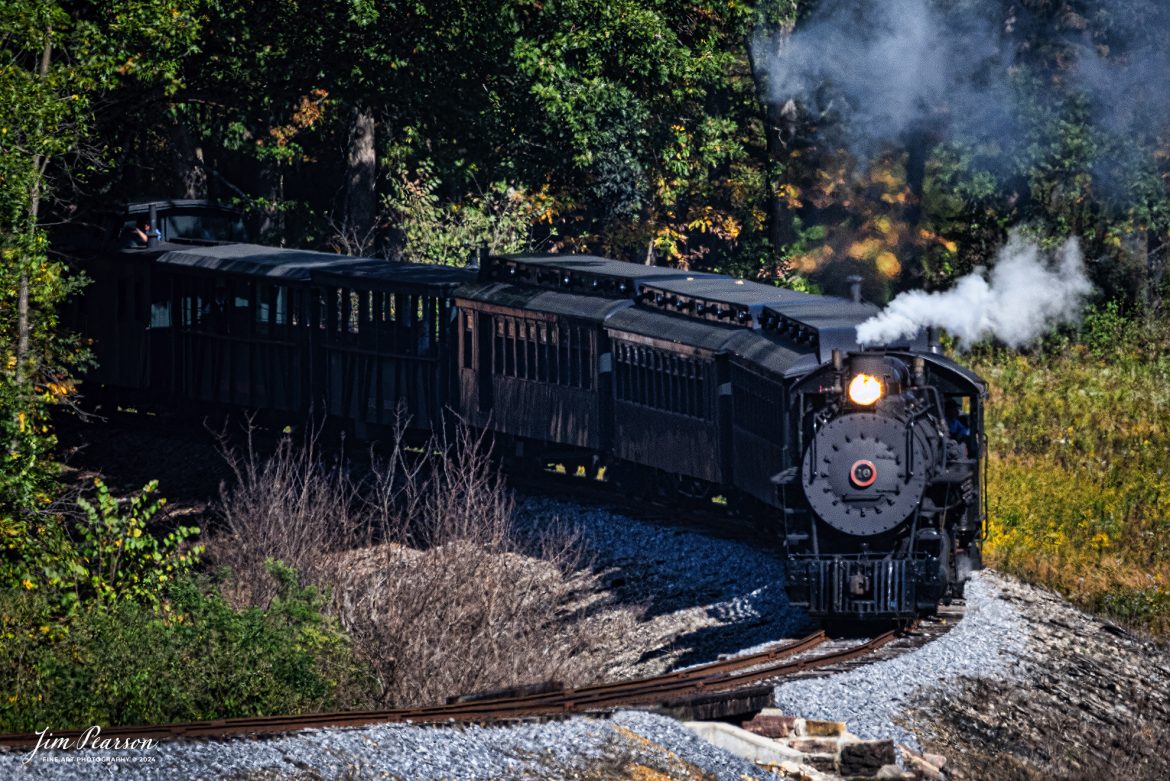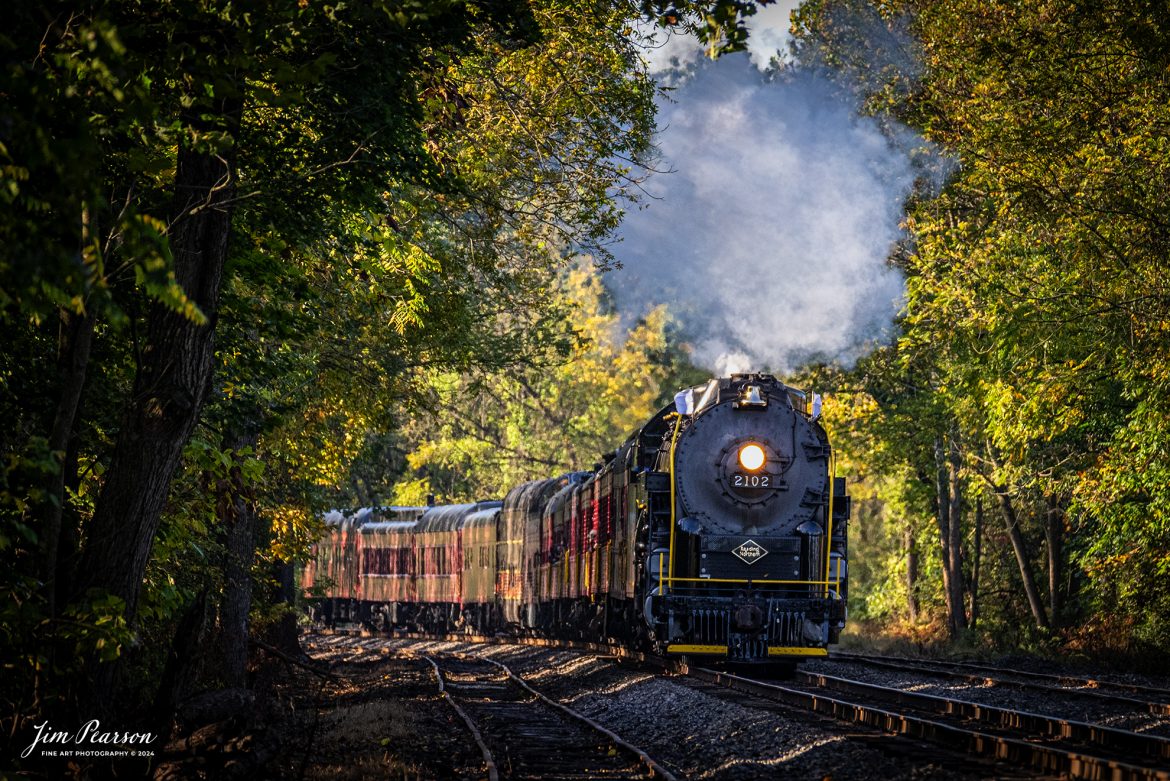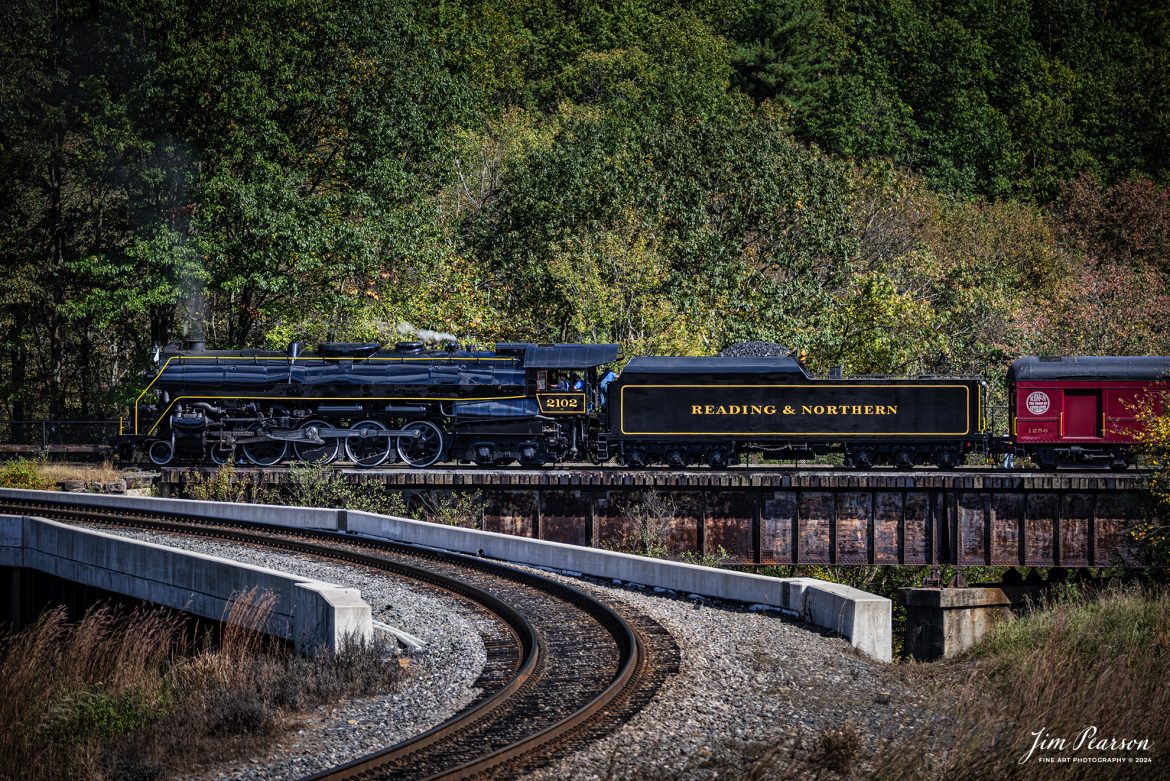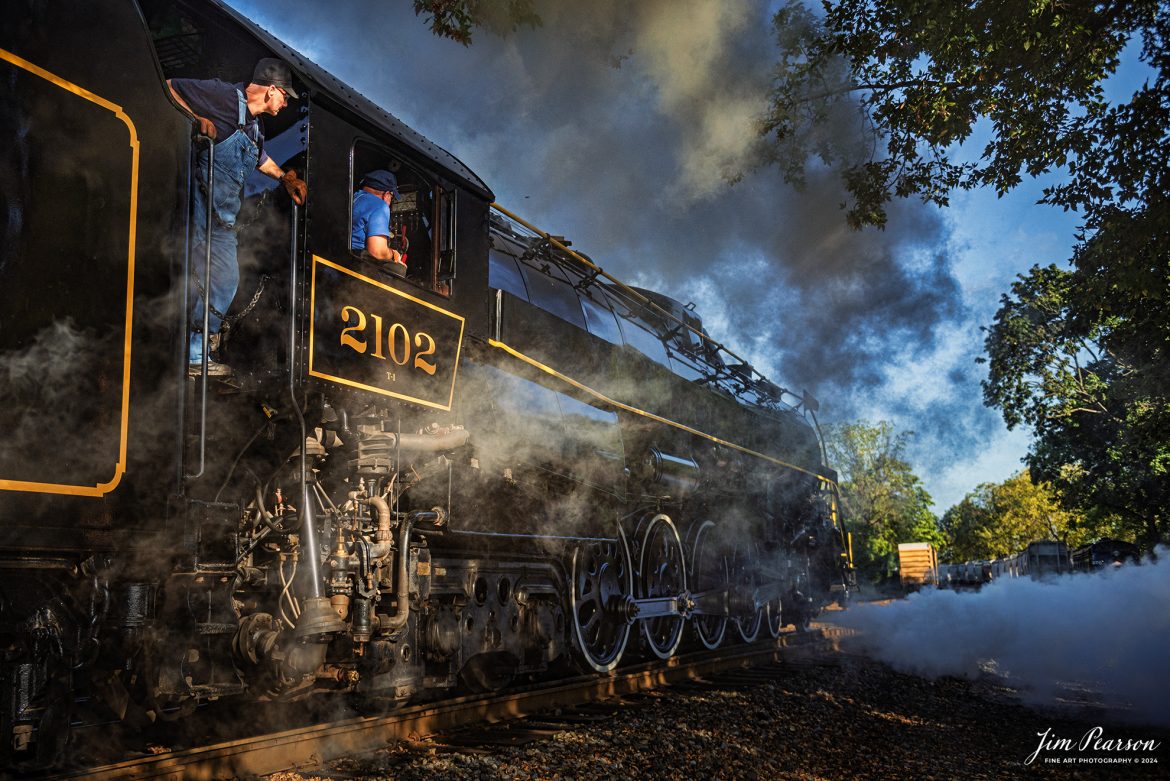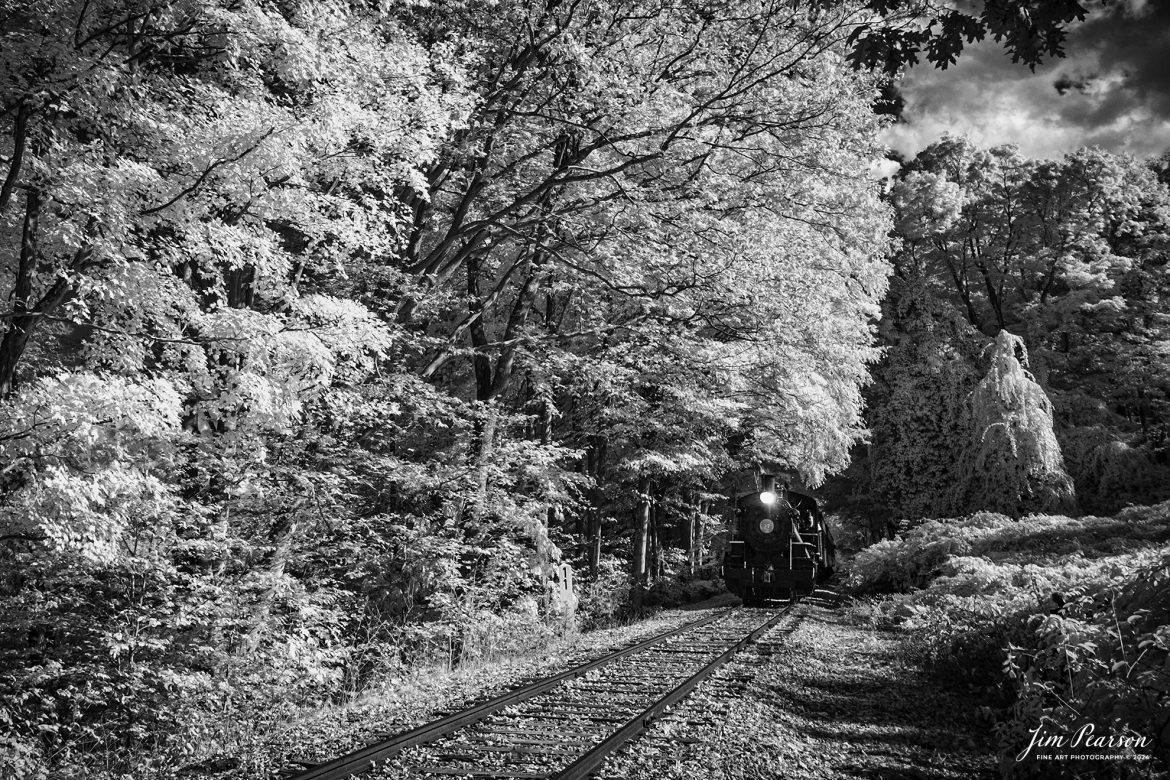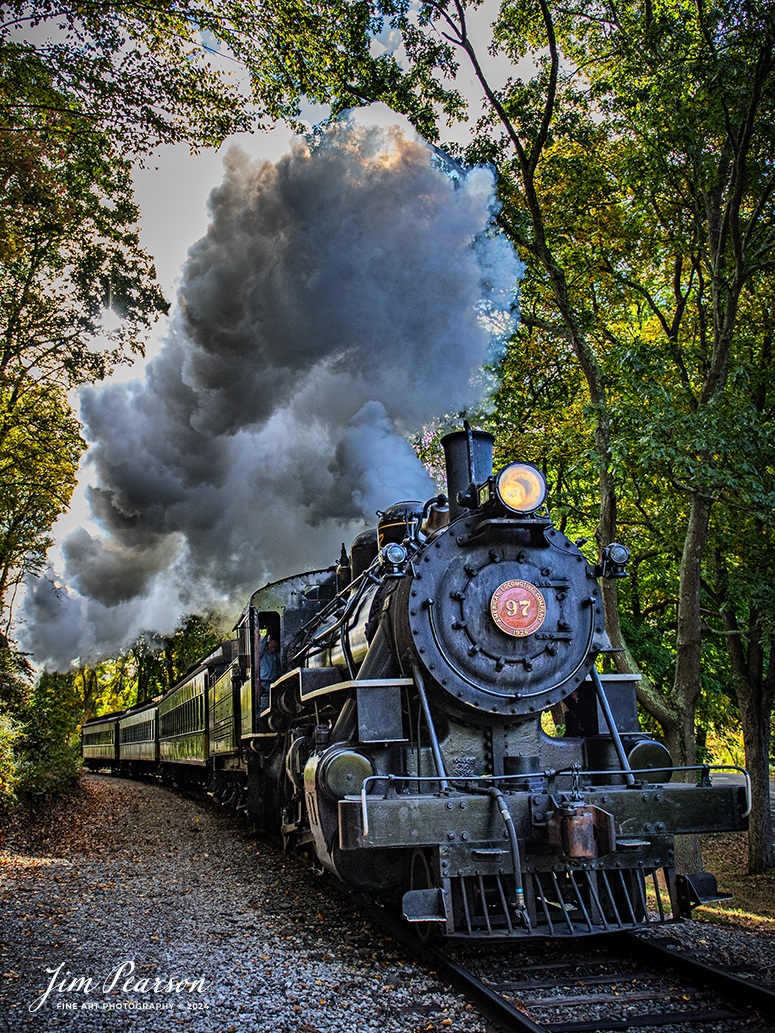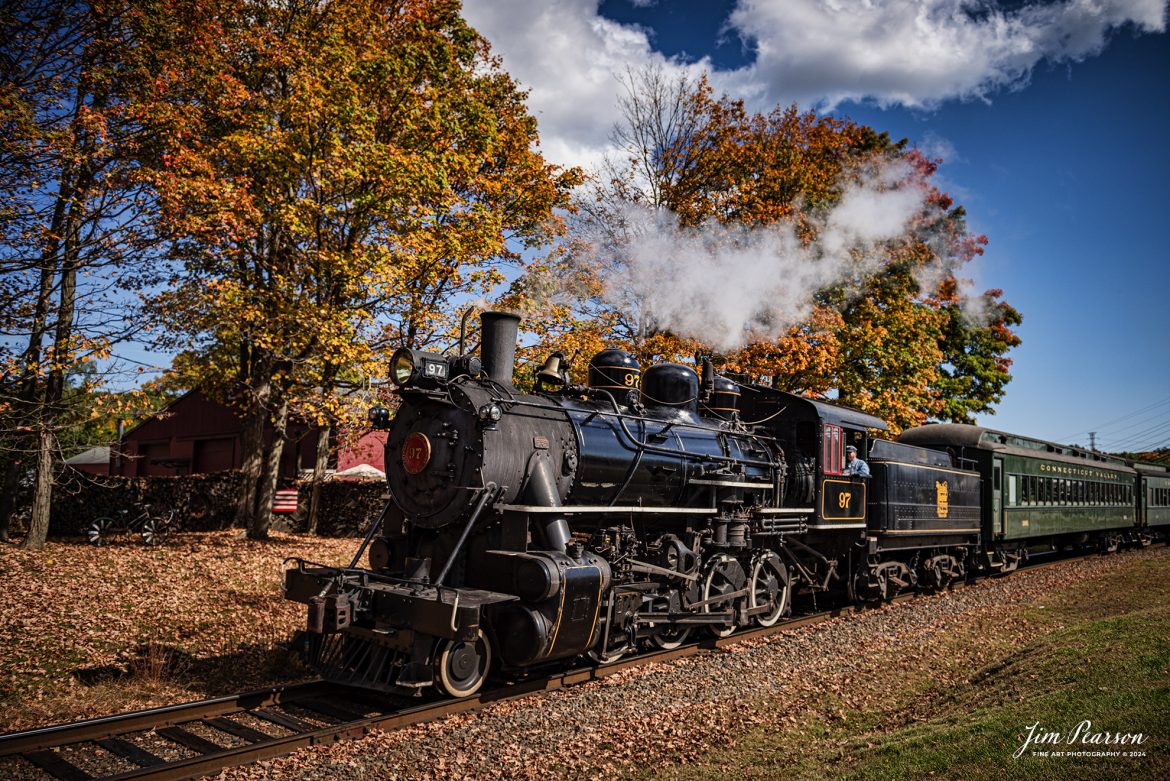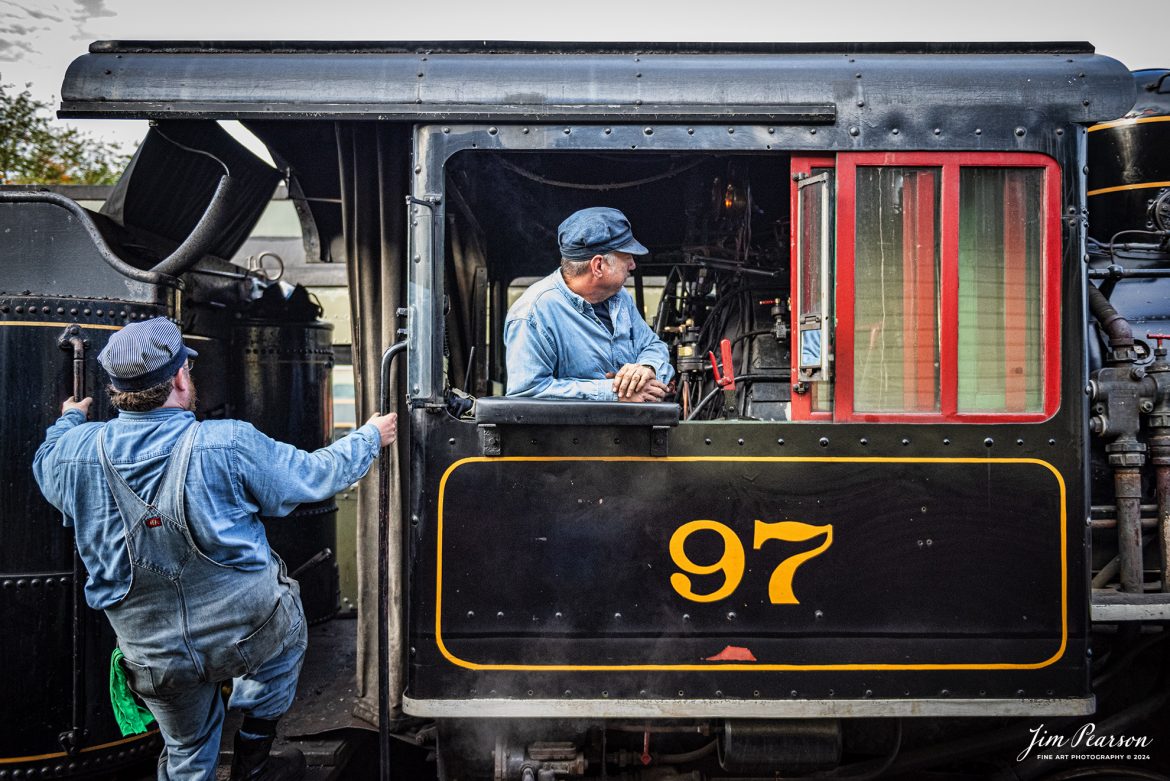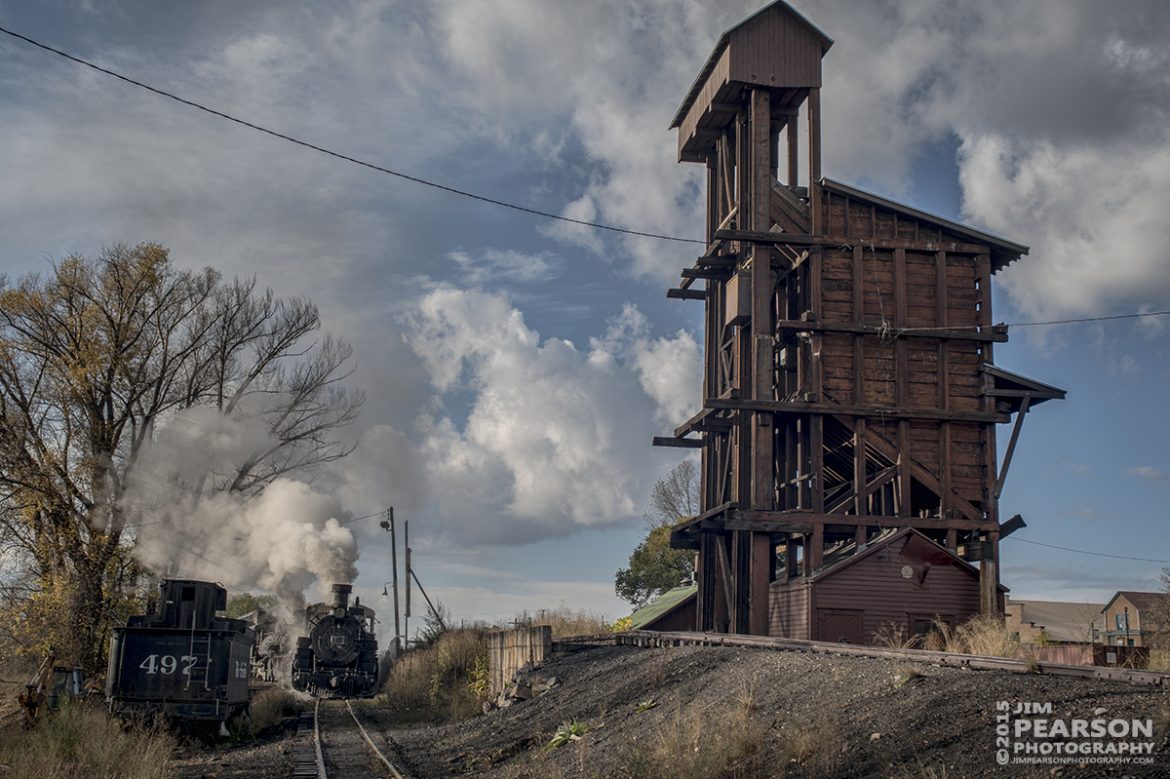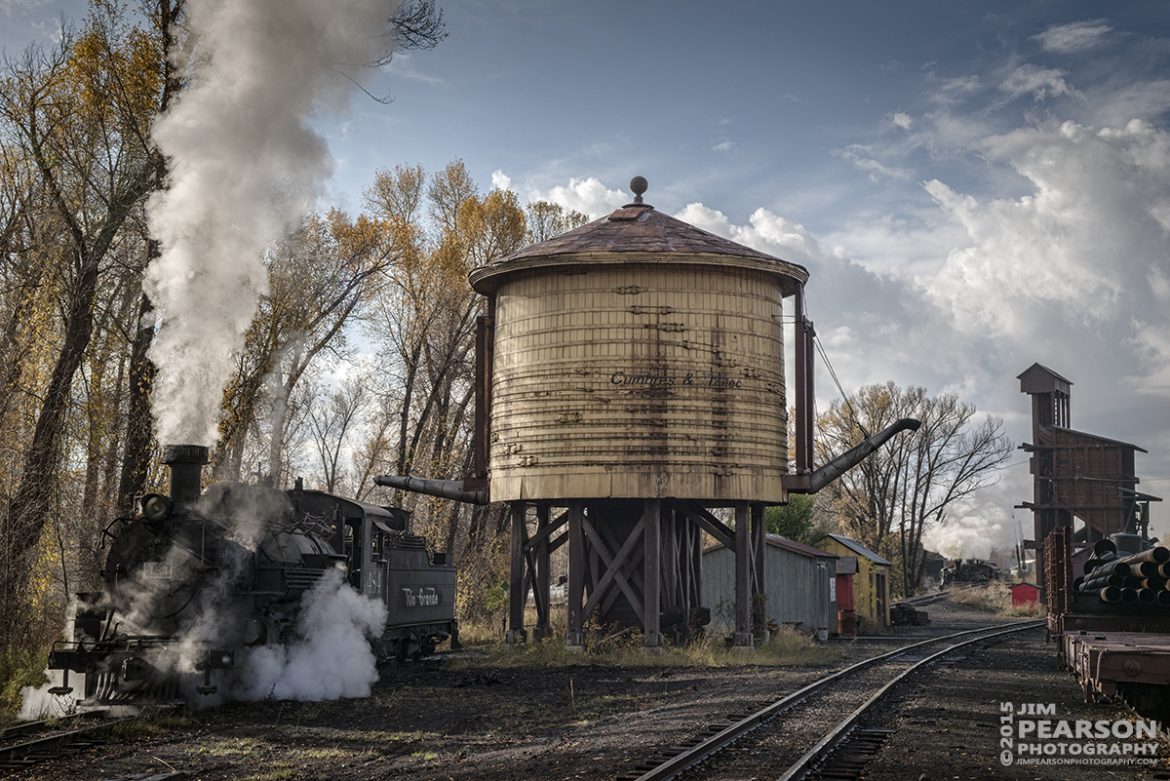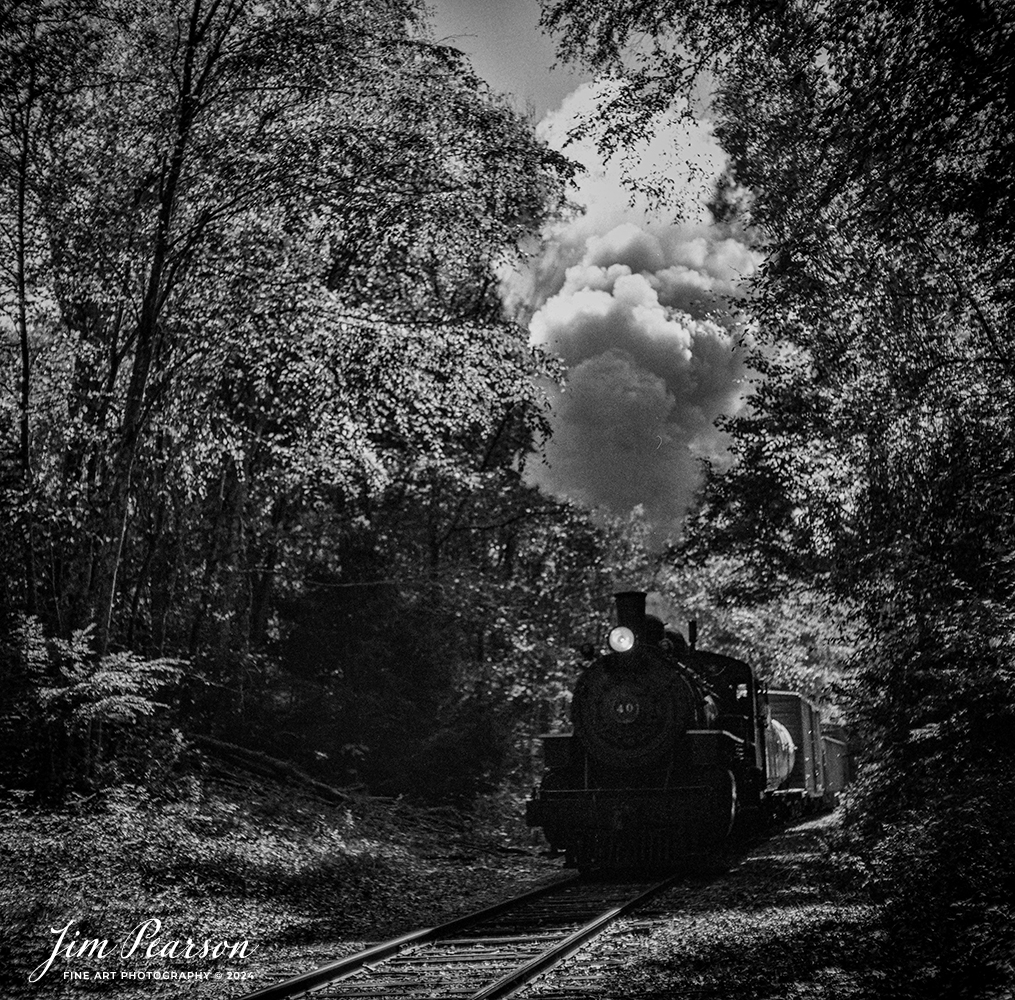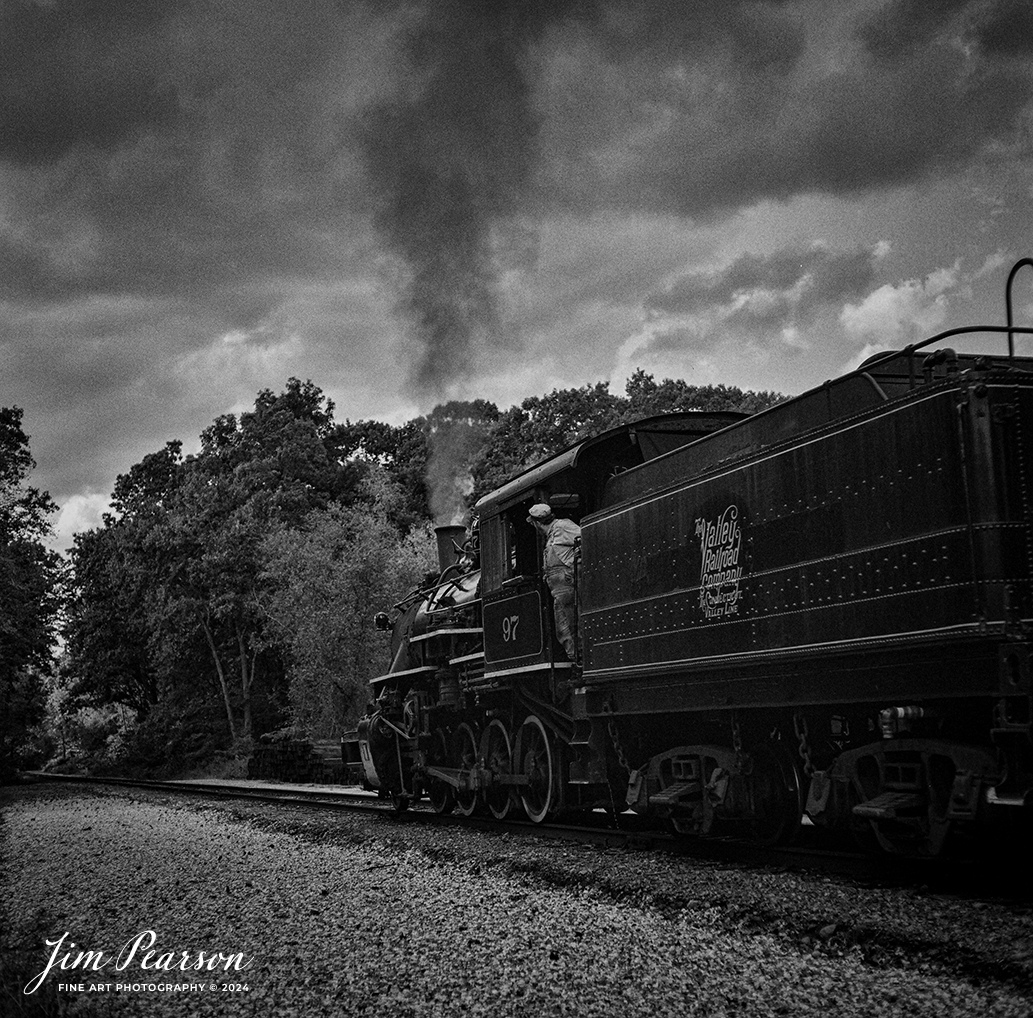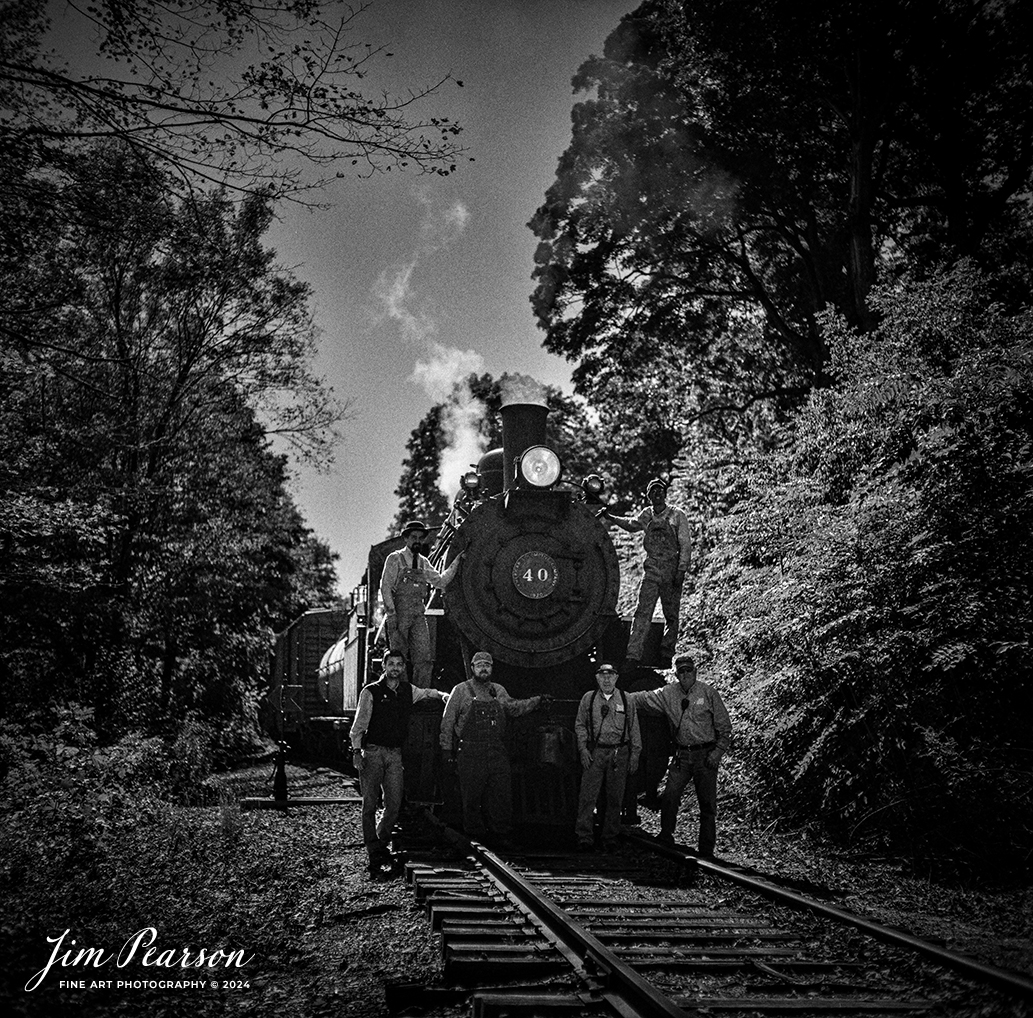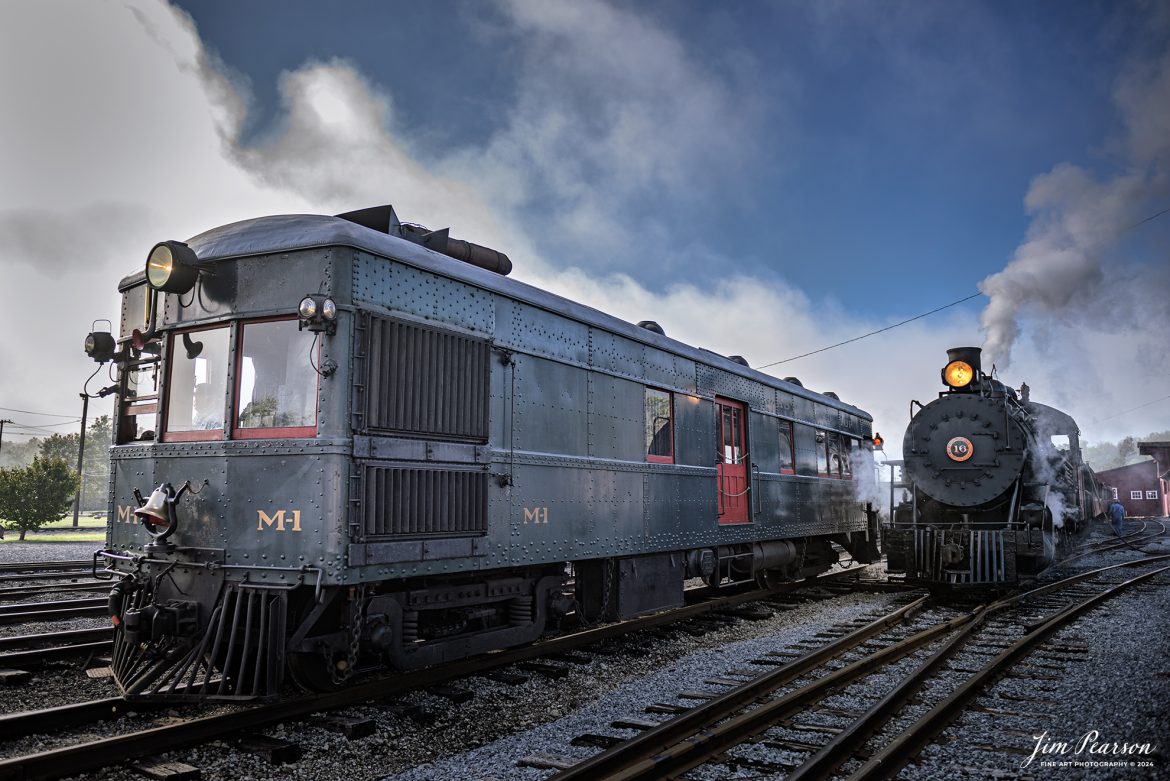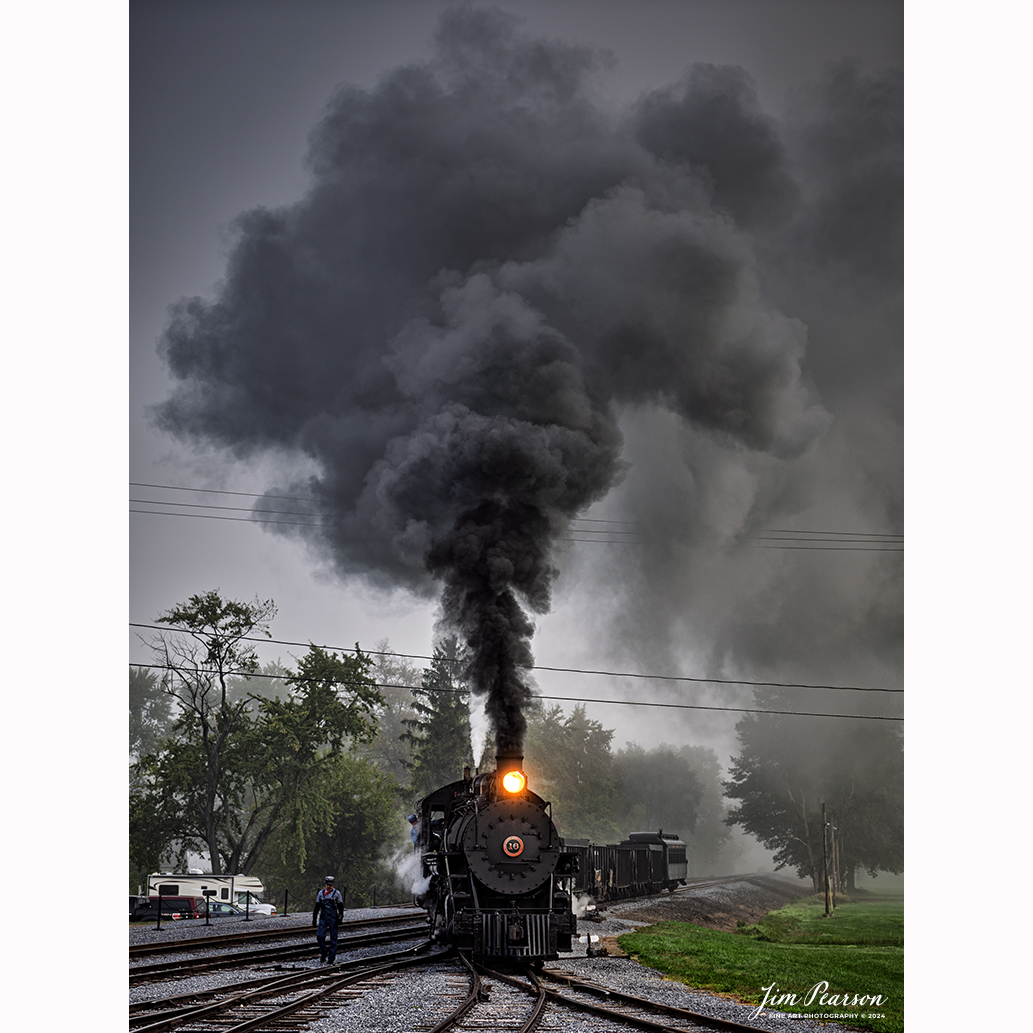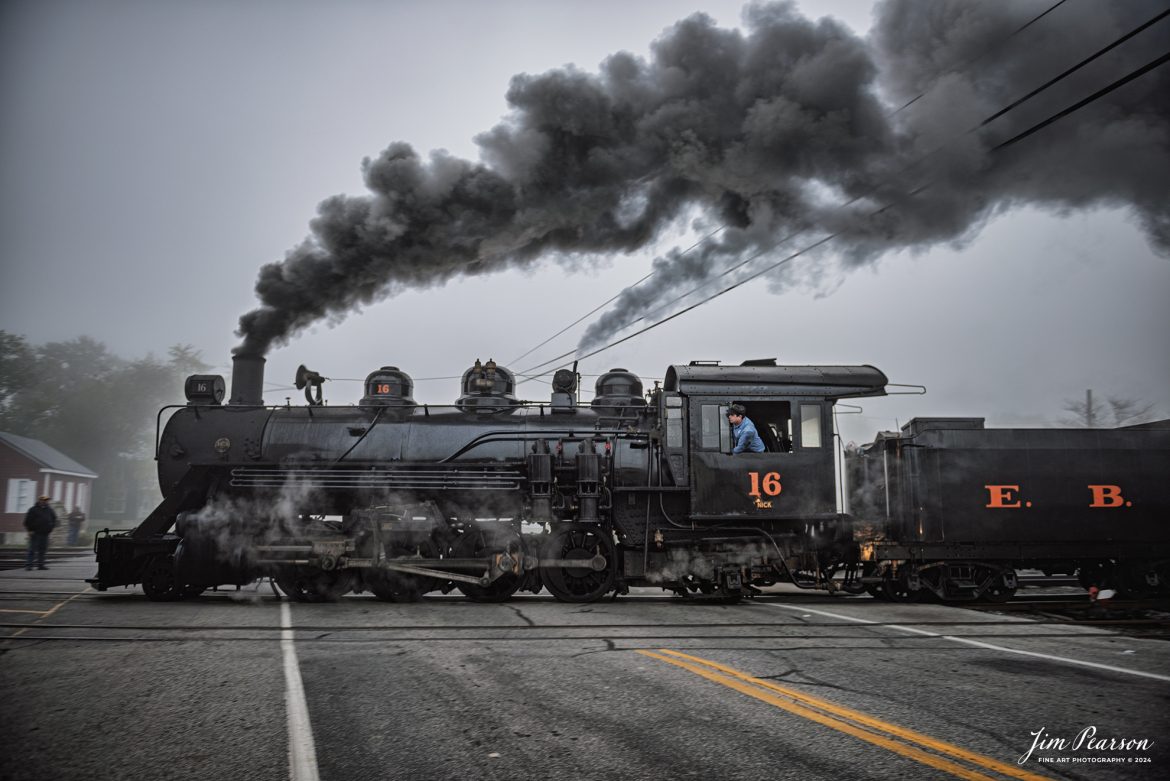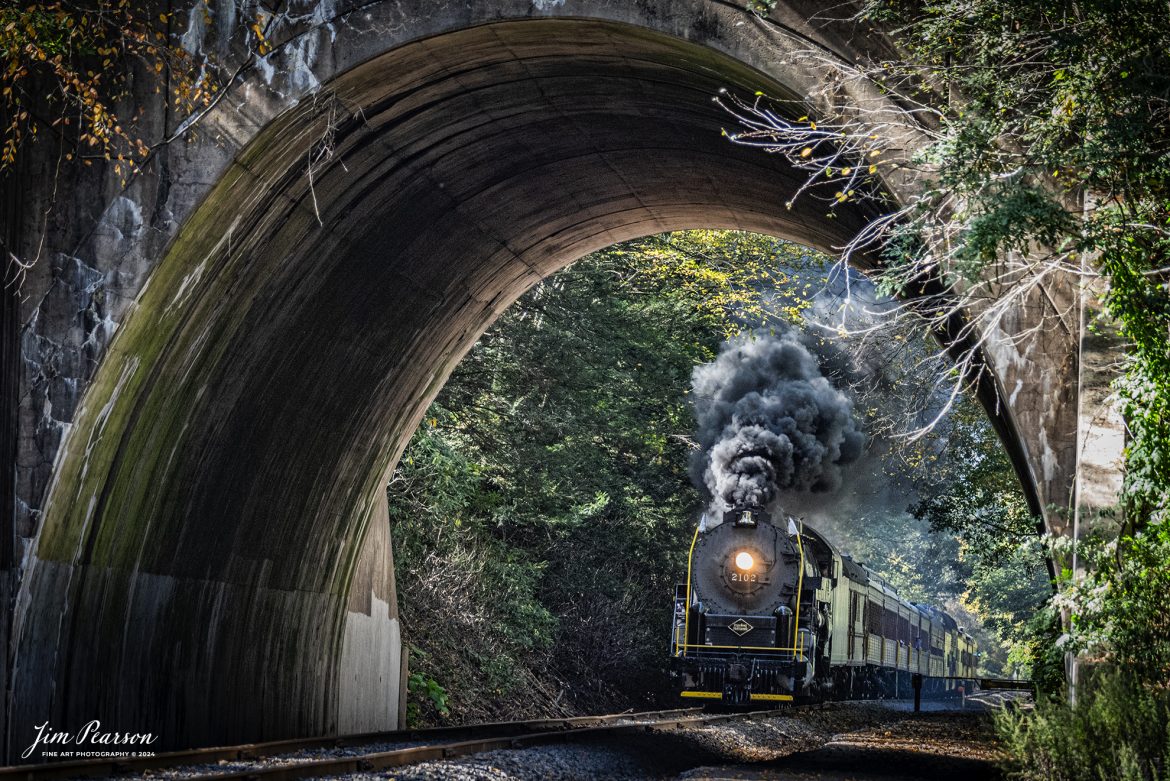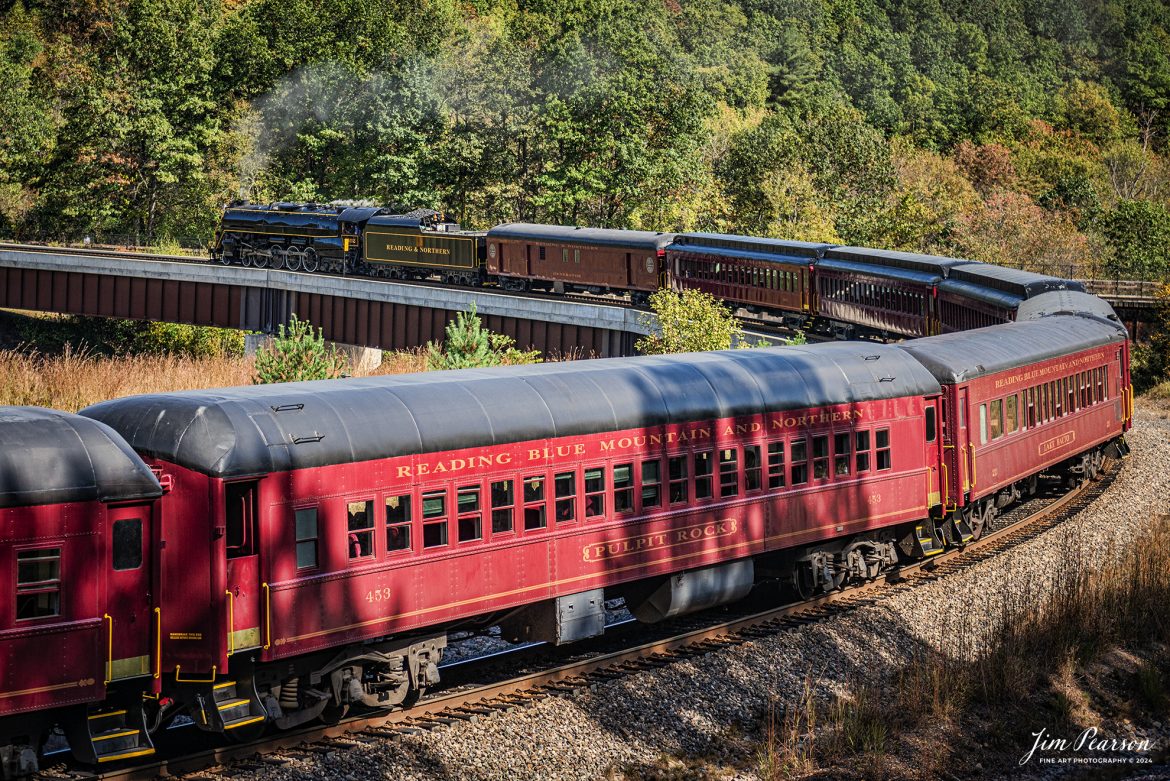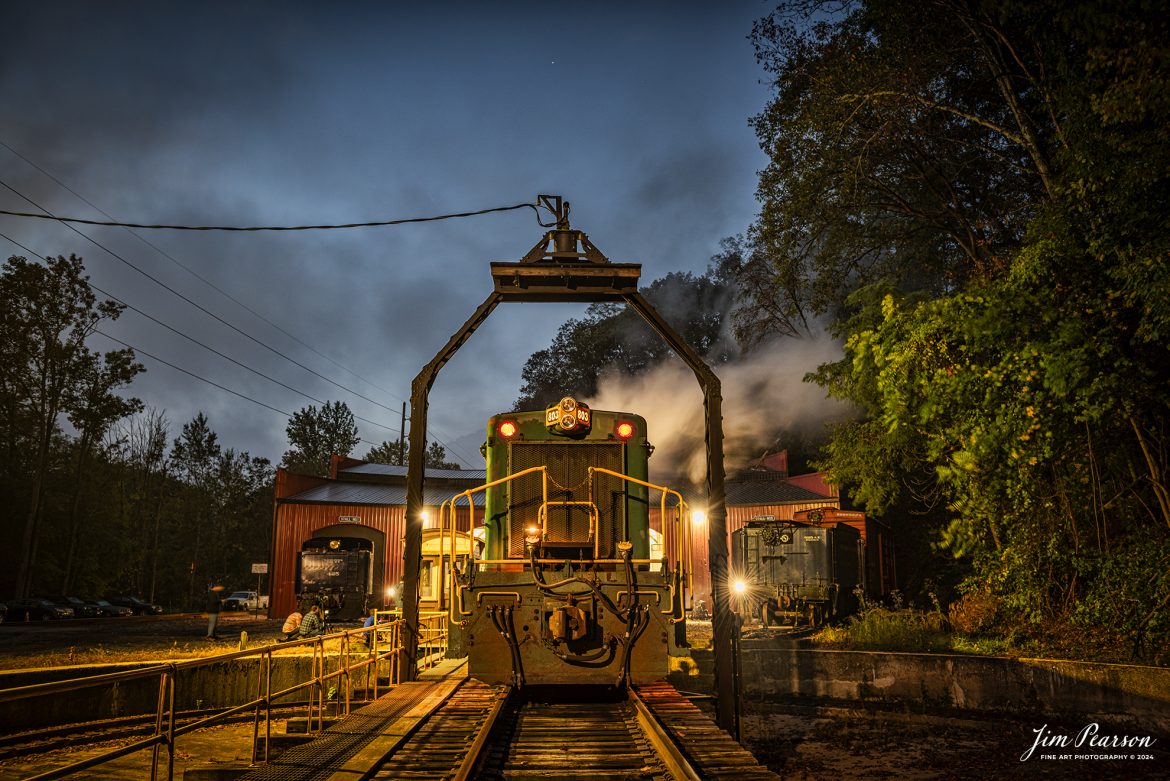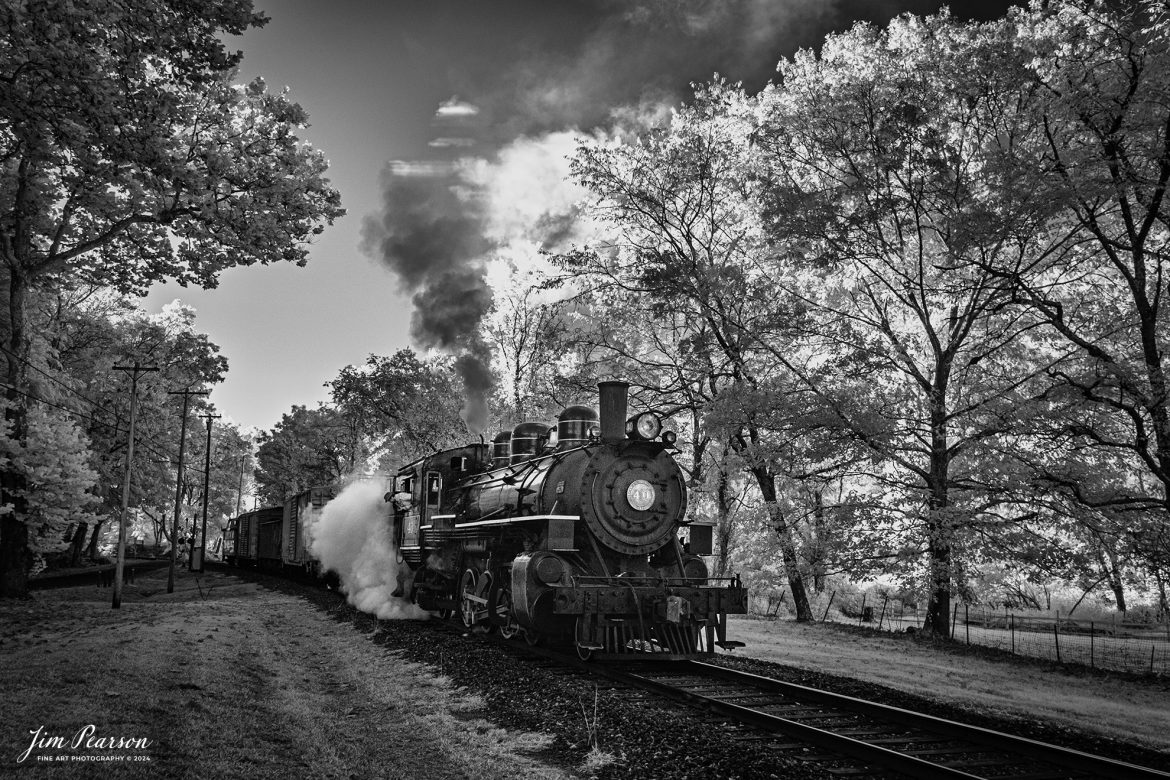East Broad Top (EBT) steam locomotive #16 pulls a passenger train as they head to Rockhill Furnace, Pennsylvania on October 5th, 2024, during the museum’s Friends of the East Broad top event.
This is my first post from a week-long trip I took with Bryan Burton (Photography) where we traveled 2,800 miles and covered steam operations at Reading and Blue Northern Railway (2102), East Broad Top Railroad, Strasburg Railroad and then a two-day photo charter by Dak Dillion Photography at the Valley Railroad in Essex, CT. It was a long, but fun and exciting trip for sure! You’ll see a lot of steam action over the coming weeks!
According to the East Broad Top Website: Locomotive #16 was built in 1916 by the Baldwin Locomotive Works.
Entering the age of modern steam in 1916, the EBT received its first of three large Mikados. Unlike the previous three smaller locomotives, #16 came with superheaters, piston valves, and Southern valve gear. One story mentions #16 pulled 60 empty hoppers from Mt. Union to Rockhill in one train, literally clearing out the yard. #16 underwent an overhaul in 1955 and made only a handful of trips in early 1956 before the railroad shut down an overhaul when the EBT shut down. On February 1, 2023, the locomotive returned to service.
Tech Info: Nikon D810, RAW, Sigma 150-600 @ 500mm, f/6, 1/1600, ISO 450.

